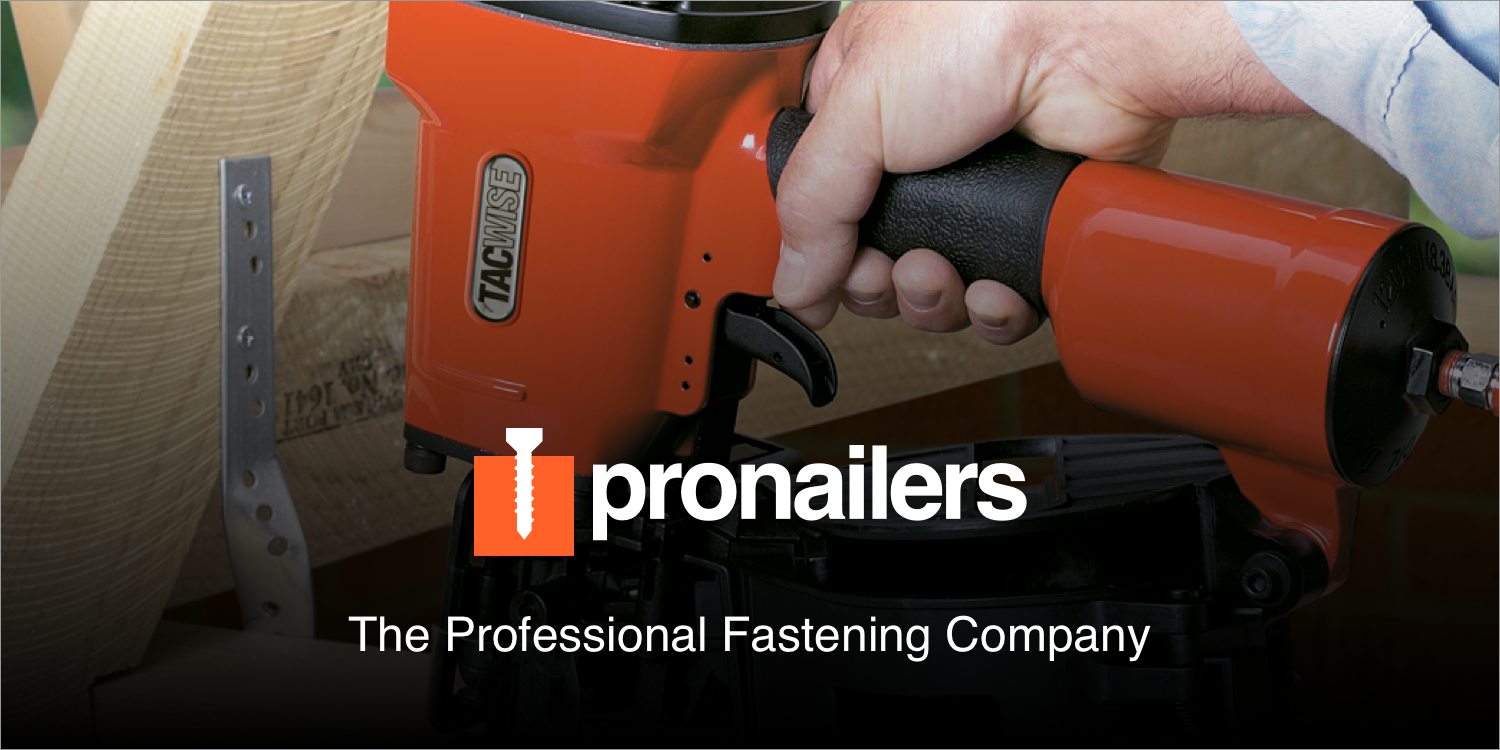Introduction:
Nails are produced in a variety of shapes, strengths, angles, diameters, finishes and lengths. Each nail has specific characteristics, making it suitable for certain applications. Nails are generally manufactured in two main finishes: galvanised (galvanised nails) and stainless steel (stainless steel nails), where extra corrosion resistance is required. Other less common finishes include bright nails and STANOX nails. Industrial collated nails can be grouped into two main categories:
- 1st Fix Nails – For heavy duty and structural applications
- 2nd Fix Nails – For finish and trim applications
First Fix Nails:
First fix nails are produced in two main forms, which determine what tools they can be used with:
- Strip Nails – These nails, as their name suggests, come in collated plastic strips, collated paper strips and collated wire strips, and work with strip nailers. They are produced in full head, clipped head and offset head variations.
- Coil Nails – Available in wire collated and plastic collated forms, coil nails hold a larger volume than strip nails. When combined with coil nailers, they allow the user to reload less frequently and work for longer durations at a time. These nails are only produced in a full head variation.
The three main parts of a first fix nail are its head, shank and point. These in large part determine what a first fix nail can and should be used for.
Head – The top of a nail, nail heads are generally produced in two main forms, clipped head or full head (round head). As their name suggests, the main difference between these nails is that while full head nails have a full head, clipped head nails are missing part of their head. This allows clipped head nails to be collated closer together, meaning more nails can be held in a strip. However, it is the case that in some jurisdictions clipped head nails are not permitted for use. Other options include offset head nails. They too have a full round head, but their head is off centre, meaning they can be collated closer together than standard full round head nails. However, once driven they look the same.
Shank – A nail’s body, produced in three main forms:
- Smooth Shank – The most common type of nail shank, they are also the quickest and easiest to drive into surfaces. However, due to their design they don’t provide the same level of hold as other shank types and therefore are suitable for applications such as timber frame construction, first fix construction, pallets, sheds, joists and decking.
- Ring Shank – When driven into surfaces, these annularly threaded nails provide greater levels of hold than smooth shank nails, making them harder to remove. These nails are therefore ideal for use in softwood environments where they may be exposed to the elements. Such applications include timber frame construction, roofs, decking, roof shingles, siding, sub flooring and pallets.
- Screw Shank – Providing similar levels of hold to a screw, screw shank nails provide higher levels of hold than both smooth shank nails and ring shank nails. They however are harder to drive into surfaces than both these options. Their level of hold means they are also harder to remove from surfaces, which makes them ideal for use in hardwood applications such as framing, flooring, sheathing, decking, fencing, siding and pallet assembly.
Point – The tip of a nail, this determines how a nail enters materials. While there are a variety of options, the most common are chisel point and blunt point, which are designed to reduce the splitting of materials, and diamond point, which provides the strongest hold and is easily driven. Other variations include flat point and clinch point.
Second Fix Nails:
Designed for use in finishing and trim applications, second fix nails can be placed into three main groupings, finish nails, brad nails and pins. The main difference between all these nails is their thickness. The thicker the nail, the stronger its hold will be. Therefore, the thickness of a nail, also known as its gauge, hugely influences the type of applications it can be used for. The larger the gauge, numerically, the thinner the nail. For example, an 18 gauge nail is thinner than a 16 gauge nail.
- Finish Nails – Manufactured in 14 gauge, 15 gauge and 16 gauge variations, finish nails provide the strongest level of hold out of all second fix nails, although this comes at the expense of a slightly less aesthetic finish. This makes them suitable for larger trim applications such as crown moulding, door and window casing, furniture assembly, beading, interior finishing, sub flooring, skirting, craftwork and panelling.
- Brad Nails – An 18 gauge fastening, brad nails provide a compromise between finish nails and headless pins. They provide a stronger hold than pins, but a more aesthetic look than finish nails. They are designed for applications that involve door and window beading, light wood assembly, furniture assembly, moulding and decorative trimming.
- Pins – Produced in 23 gauge and 21 gauge variations, headless pins provide the most aesthetic finish out of any second fix nails. However, they also provide the weakest hold and sometimes require glue to help keep them in place. This makes them suitable for applications where the aesthetic finish of a job is the main priority. These include door and window trimming, invisible fixings, furniture assembly and picture and mirror framing.

